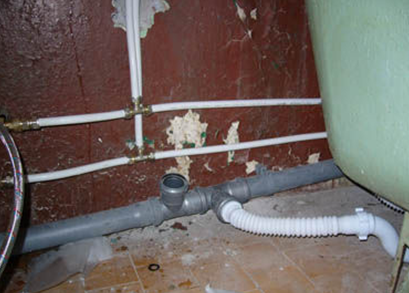Recently, among the management companies, the special practice of influencing the hard-core non-payers of utility payments began to spread. It consists in setting a barrier to sewage pipe , which is located in the apartment.
Overlapping of water can be problematic, because for this it is necessary to get into a particular apartment, but the landlord can simply not let him into the house of the controllers and he has the full right to it under the law.
And without access to a separate apartment, it is impossible to turn off the water due to the fact that, in this case, it is necessary to block the entire riser, that is, all the apartments from the first to the last floor, located under and above the debtor's apartment. This can not be tolerated.
The municipal services have found a way to suspend one of the services without access to the apartment. They limit the outlet of drains. The method was called the installation of a stub.
It can be continuous (overlapping drains completely) or latticed (for the outlet of liquid effluents, but the delay of faeces).
The effect of using this method proved to be very effective. The fact is that every resident can drain up to 200 liters of drains into the sewer. If only imagine that all this will remain in the apartment, then the resolution of the conflict promises to move much faster toward paying off the debt.
Installation of plugs on the drain
Installation of plugs for sewerage to debtors
The technology of mounting and placing a barrier on a sewage pipe or a plug does not prevent the flow of neighbors from flowing along the riser. But it does not allow the passage of drains from a separate apartment.
Blankets are produced from different materials and have different forms. Their installation is a high-tech process, which became possible to realize only in recent years.
For this purpose, utilities specialists use:
- videocameras working remotely;
- manipulators;
- optical fibers.
The process of mounting the plug is as follows:
- At first, the communal service employee conducts an inspection and evaluates the form of the sewage pipe in the apartment, since in some cases two or more risers can be connected.
- After that, he decides where to mount the stub. Usually it is installed from the toilet bowl to the main riser.
- Then he looks for a place to place the equipment, for example, it can be an apartment on the floor above or the end of a ventilation sewer pipe.
- There, the manipulator is lowered, on which a video camera or light guide is mounted. The plug is carried over the riser, the side-by-side branch and installed in the required location.
After the manipulations, the flow of effluents in the sewer pipe of the selected apartment completely or partially ceases.
Companies offering services for installation or, conversely, the dismantling of plugs for sewage, very much. But in terms of design and principle of work, they, in fact, are no different.
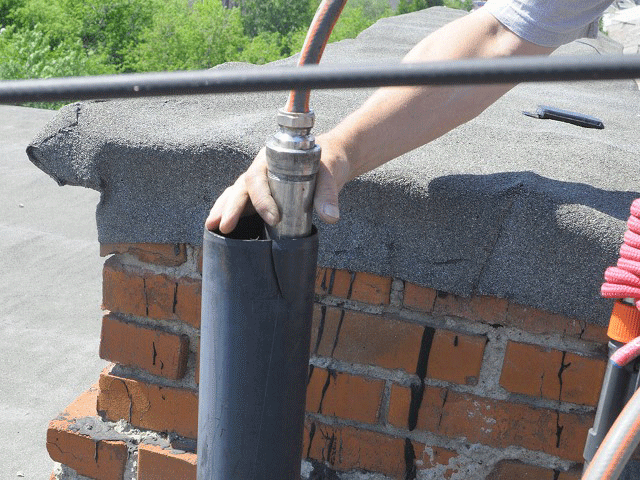 Remote installation of plugs for sewage
Remote installation of plugs for sewage CC and the company for the installation and dismantling of stubs
As the service began to enjoy increasing popularity and demand for it is growing, there are many companies working in this field. For example, it's "Terminator", "Cockroach", "Sprut", "Grotto", "West-Cleaning" and many others.
Management companies with a large number of debtors may conclude with the company for the installation and dismantling of stubs agreement for subscriber maintenance, which provides for the number of malicious defaulters and the time when they establish barriers. This company can take upon itself the notification of debtors about the forthcoming operation and, in case they did not pay the debt within the terms indicated in the notice, to overlap sewage system . It is also possible to cooperate, when the company simply performs work on the basis of the terms of reference, installing stubs, which is advisable in single cases of existing defaulters.
To install plugs, you must meet a number of requirements:
- the risers should not have branches;
- before the work you need to collect information about the pipes, namely: their size, type, number of bends;
- a safe exit to the riser shall be provided;
- above it should be a space of eighty centimeters;
- the debtor was informed of the operation under the law.
Can I take it off?
Many debtors, who have installed stubs, are looking for a way to remove it. The best way in this case is to pay utility bills. As for other methods, they are difficult to implement, but possible.
It is problematic to do this because the debtor does not have and can not have the same equipment with which the stub has been installed. If you try to do this from your own apartment, you need certain skills in working with plumbing equipment. Without it, there is a risk that it will clog or, worse, damage the whole riser. And the responsibility for this will have to be borne. In addition, do not forget how messy this work is. After all, in order to remove the device, you need to remove the toilet. And by this time, he certainly filled with sewage.
If the risers are metal-plastic, then removing the plug will be easier than in the case of cast-iron structures.
 Removing stubs from sewer pipes
Removing stubs from sewer pipes
There are two ways to delete them:
- mechanical;
- chemical.
Mechanical method
If you disassemble the site leading to the stub, then it is quite possible to get rid of it by yourself. The easiest way to do this is if the plumbing fixture was installed recently and it was bolted. If the toilet is old, moreover, it is poured with cement mortar at the base, it is better not to even try to remove it, because this will lead to its deformation. The plug is installed at the input residential sewerage , therefore, removal of the toilet bowl is necessary to ensure access to it.
With modern plumbing fixtures, fastened on bolts, business is much easier - they simply unscrew, and disconnect the socket. The first connection after it is the exit to the riser. Already at this stage, the blocking cap will be visible.
With a short pipe length, it is seized with pliers. If this fails, then you can make a hook or use a fishing harpoon. Having hooked, it is carefully pulled out. When deformed or broken, it is removed in parts.
To carry out the entire work will need: a wrench, a hammer, a hook, wrenches, a flashlight and dowels.
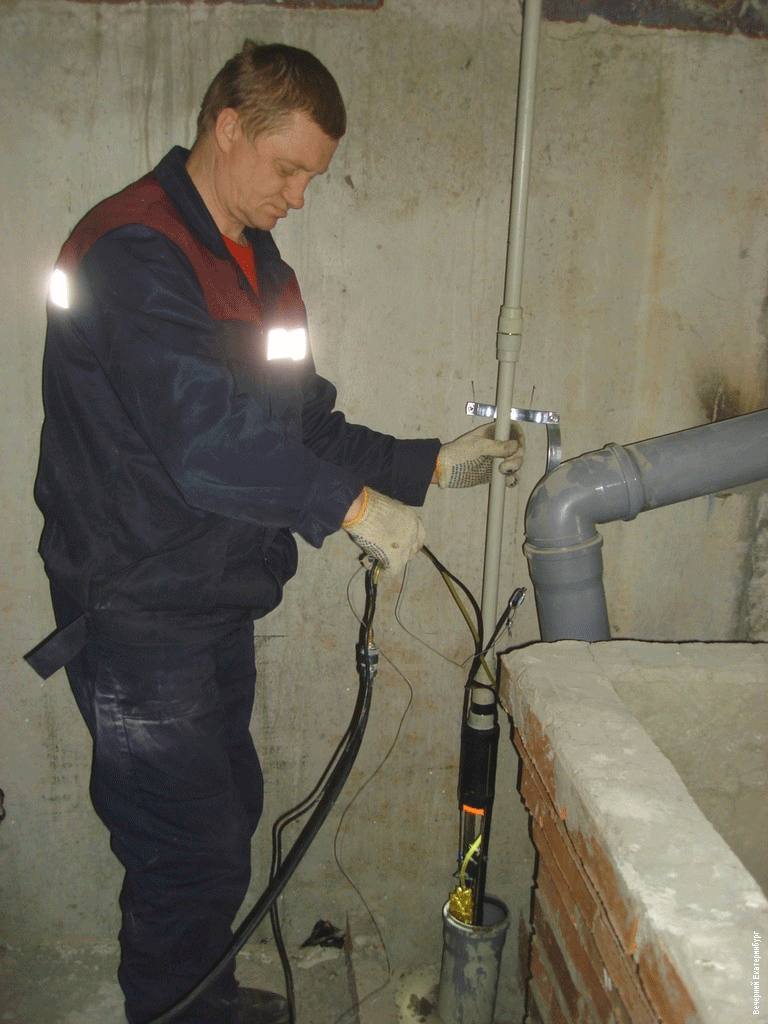 Unlocking the plug mechanically
Unlocking the plug mechanically Chemical method
Remove the stub with chemicals or through the audit does not guarantee a positive result. But sometimes they are tried.
In order to try to remove the plug by revision, prepare a long thin stick with a hook or harpoon at the end, the arm is covered with dense polyethylene and put on gloves. The rope is tied to the handle so that if the stick slips out of the hand, you can pull it out. Further everything is simple: the audit is opened, the hook is pushed in and the device is caught. However, at the same time it is necessary to adhere to safety measures, because, at the time of the work, neighbors can not only go to the toilet, but also release very hot water. There is also a danger of damage to the plug, which, as already mentioned, can lead to a clogged riser. Another drawback of this method is that you have to work blindly.
Sometimes try to remove the cap by Moles. It can only be obtained when the plug is made of metal. But even in this case, it will take a long time - one week, at least. In addition, do not forget that the UK can always reinstall it.
In addition, as will be discussed below, the Civil Code provides for the citizen's liability for unauthorized interference in public house communications. Therefore, before you try to remove the stub yourself, you need to think about the possible negative consequences.
 Dismantling the plug by chemical means
Dismantling the plug by chemical means
The easiest way to remove the cap is to call the company that installed it. After paying the debt, they withdraw it for an additional fee. The whole process, as well as installation, will take no more than half an hour. In addition, this will not require the removal of the toilet and the rest of the dirty work. Using the same equipment as in the installation, the plug is removed quickly and safely.
Blanket for sewers for debtors: legality
When this practice was just beginning to be implemented, the city authorities (in the capital) sharply opposed it. But, gradually, the attitude towards this method changed qualitatively.
By itself, turning off the water drain, including sewerage, does not make the apartment unfit for habitation. Therefore, this measure by itself does not violate the law. At the same time, it is necessary to notify the debtor about the application of the planned measure. In this part there are violations, when the defaulter was not notified of the shutdown properly.
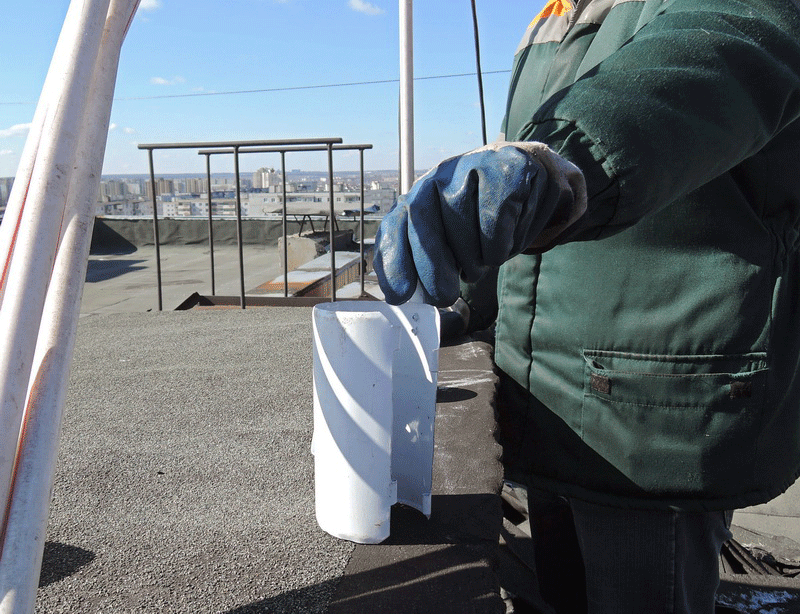 The legality of the installation of drain plugs in debtors in question
The legality of the installation of drain plugs in debtors in question Civil-law acts that prove the legality of this procedure are the Housing Code, the Civil Code of the Russian Federation and Government Decrees.
Thus, Article 155 of the RF LC obliges tenants to pay utility bills fully in the due time.
Article 119 of Government Decision No. 354 of May 6, 2011 provides for restrictive measures for the provision of services. It is allowed to suspend all of their types, except for heating and cold water supply.
This measure was forced to take because of the huge debt of citizens on utility payments. As of the end of 2012, the debt to the state was almost one hundred and thirteen billion rubles. On September 1, 2012 it was decided to suspend the provision of services to malicious debtors, counting on the fact that it would become an effective mechanism in the fight against non-payers of public services.
Paragraph 29 of Government Decision No. 491 of August 13, 2006 includes the expenses incurred for collection of debts to the account of the payer.
And Article 15 of the first part of the Civil Code provides for the need to recover damages for unauthorized interference in the communication of the common ownership.
Thus, these legal acts testify to the full legality of the application of the stubbing procedure in the event that the debtor has been notified of it, according to law.
Pay bills or not pay
As of October 2015, the citizens' debt on utility payments amounted to 250 billion rubles. Therefore, measures toughen the position of non-payers continue to be accepted.
So, from January 1, 2016, a new law will come into force, which will charge penalties for debts on utility payments. Debtors will be required to provide the regional authorities with a bank guarantee to secure payment obligations.
The decision to pay or not pay their bills on time, remains on the conscience of homeowners. But, as it turns out, one way or another, one day you'll have to pay. And this amount will increase substantially.
Disabling debtors from the sewage system without penetrating into the apartment is a new highly effective measure of fighting debtors for utility services!
According to the National Association of Professional Collection Agencies, the population of Russia at the end of 2015 owes more than 200 billion rubles for utility services. Debt management companies have exceeded the bar 700 billion rubles. The problem of non-payments in the housing and communal sector is quite acute. There are citizens who do not pay for years. And they do not pay not because they can not, but because they do not want to. A debt on housing and communal services is growing!
It's one thing when a citizen delays payment for 1-2 months, and another, when he from year to year completely consciously does not pay for services, realizing that he will not get anything for it. And the fines that can be accrued in accordance with the Housing Code for the amount of debt, the weather does not do. If he owes 100,000 rubles, he gets a fine of 3,000 rubles - the situation does not at all stimulate citizens to pay off their debts.
The most effective method struggle against non-payments for utility services - disconnection of debtors from the sewage system. Communal know-how (plug for sewerage) is already used in many cities of Russia, and everywhere shows consistently high results when low cost
The company West-K offers a service - restriction of water disposal (blockage of sewage) in buildings of any number of storeys without penetration into the apartment, which help to effectively influence the malicious defaulter, thereby solving the problem of non-payment of debt.
Cut from the program "Miracle of Technology" channel NTV. Was shot on the basis of our company.
How does it work?
OOO West-K, under a contract with the Management Company, with the help of special equipment, installs a special stopper for sewerage, which limits the drainage at the entrance to the public sewer riser from the side of the apartment indicated by the customer to 90%, and thereby limits sewage in the apartment. This is done remotely, from the roof of the house, or from a technical floor. Employee of our company from the roof of the house, or from the technical floor, launches a sewerage device in the sewer stand, places the floor in question and, centering on the video cameras, an exit to the riser from the debtor's apartment, installs a plug on the sewer. The stub is fixed and from that moment the debtor will not be able to use the sewerage system: that is, he will not manage to wash off the toilet, or to drain water from the bath. Such a restriction on the convenience of the debtor can not be ignored, he can not remove the stub from the channelization either. As a rule, he goes to pay debts, or negotiates a restructuring.
Technical and regulatory requirements when installing the plug on the sewer to limit wastewater:
- Stands should have direct outputs without branches
- Prior to the beginning of the work, it is necessary to clarify the information on the pipe material, type, size and number of bends in the apartments;
- To the location of the risers there must be a safe exit;
- Above the riser, a free space of at least 0.8 m high is necessary;
- The debtor must be notified in time about the restriction of water disposal based on the requirements of the law.
A modern apartment building is a complex engineering structure. Maintenance of such a system, consisting of many elements, requires considerable expenses, which should be compensated to the management company by the tenants. However not all inhabitants of houses aspire to pay utility services on time. Managing companies, as they can, are fighting this problem. One way to "force residents to pay" is to install a stub on. However, against such cardinal measures, some apartment owners are undertaking no less cardinal countermeasures.
What is a sewer?
Mass non-payment of the population for utility services provided by management companies forced the Criminal Code to look for and find unusual measures of influence on debtors. The essence of the restriction is to create an artificial barrier in the sewer pipe, available in the apartment. The reason for this unusual approach is that it is not possible to simply block the water in a separate apartment from the outside. Usually, hot or cold water risers are common for several apartments located on the same vertical. Overlapping the entire riser, you will have to turn off the water and the bona fide payers, and you will not be able to cut off the water directly in the debtor's apartment - he simply will not let the inspectors come to him.
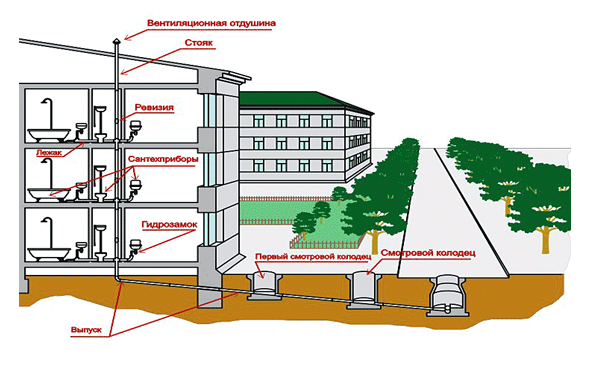
The defaulter has the full right not to let employees of communal services into his dwelling. The inviolability of a home is one of the fundamental rights prescribed in the Russian Constitution. It turns out that the specialists of the management company have little legal rights to defend their interests.
But if the specialists of the Criminal Code can not turn off the supply of water to the defaulter, then nobody prevents them from limiting the sewage out of this same apartment. Actually, the collection and withdrawal of sewage is the same utility service as the water supply, and the management company is fully entitled to limit the collection of wastewater until the defaulter repays its debt. The installation of a sewer plug stops the drains, which is a serious incentive to pay off debts.
Plugs for sewage can be of different configurations:
- solid - this design completely covers the drains;
- lattice - this design allows you to leave the liquid runoff, but delays the fecal masses.
An essential advantage of using such a method by management companies is its full legitimacy. Specialists of the Criminal Code do not enter the apartment of the defaulter, but perform in fact their direct duty - they serve the common sewage system.
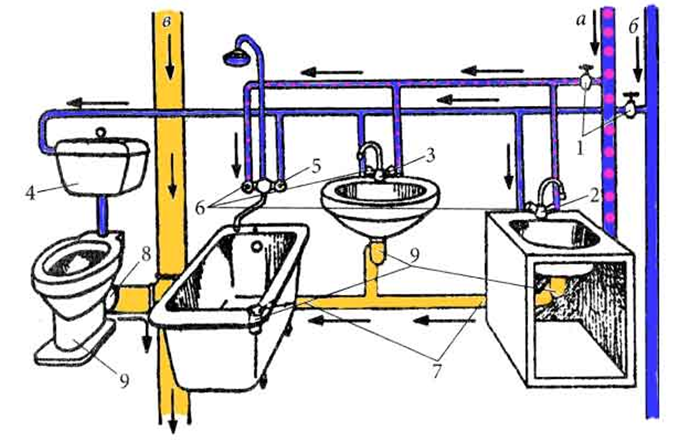
The effect of installing the stub is quite impressive. In a modern dwelling each inhabitant generates a day to two hundred liters of sewage. And now imagine that this whole mass of impurities remains in your apartment. As a rule, after installing the sewer plug, under the condition that tenants use sewer networks, it takes not more than a couple of days before the amicable solution of the issue with non-payments.
The technology of installing the sewer plug
So, the sewer plug is an obstacle, which is installed in the collecting pipe. The technology of its placement provides for the possibility of flowing from the neighbors to the riser, but preventing the sewage from entering the collector from the chosen apartment occupied by the defaulter.
Blanks can be made of different materials and have a different configuration. Their installation is a high-tech process, which was impossible a few years ago.
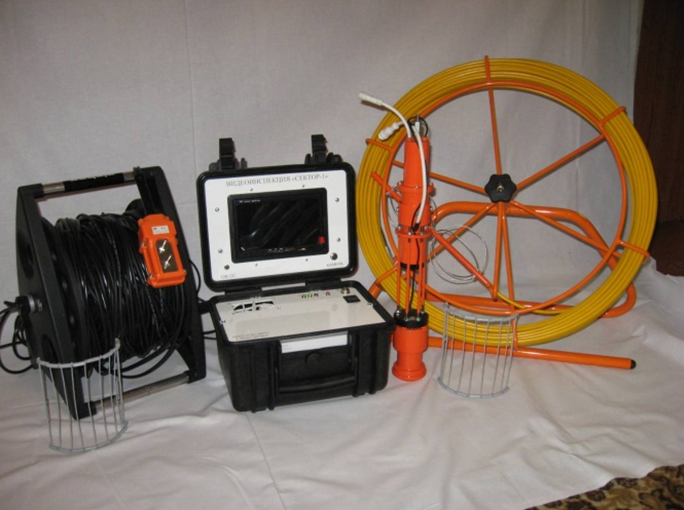
Since the specialists of the management company can not get directly into the apartment of the defaulter, they come "from the rear." To do this, remotely operated video cameras, fiber optic light guides and manipulators are used. The procedure is as follows:
- The specialist of the Criminal Code or an employee from outside the company first assesses the configuration of the sewage system in a similar apartment. The fact is that some apartments may have two or more sewer pipes, to which even more intra-apartment sewage pipes can be connected.
- After evaluating the sewer design, the specialist chooses where to place the plug. Usually this is an intra-apartment pipe that goes from the toilet bowl to the main riser.
- Then the specialist looks for an entry point where he can place his equipment. This can be either an apartment located on the floor above, or the end of a fan sewer pipe located on the roof.
- A remotely operated manipulator with a video camera or light guide installed on it is lowered into the pipe or into the inspection hatch of the sewage system. The specialist conducts a stub along the main riser, turns it into a side-by-side branch and installs it in the chosen location.

As a result, the flow of sewage through the in-house sewage pipe completely or partially ceases. At the same time, the vertical vertical risers continue to function, providing the drainage of sewage from all other apartments.
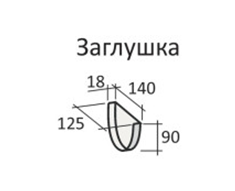
It should be noted that at present there are quite a few companies on the market offering services for installing and dismantling sewer plugs. They are represented by different brands, for example, "Sprut", "Terminator", "Grotto", "Cockroach", but the principles of their design and installation, in general, are all the same.
How to remove the plug on the sewer?
And now put ourselves on the other side of the barricade. Suppose: you are the same person who has a conflict with the management company. Hired specialists with their high-tech equipment launched remote equipment and inserted a stub into your sewer pipe.
Suppose: you are quite sure that the management company should not have limited your freedom, and the debt for the use of public services is illegal for you. What to do?
The simplest way out, of course, is to pay debts for utilities and ask the company to remove the stub. Most likely, such an operation will be made immediately after the debt is repaid.
But perhaps you decide to try to eliminate the sewer plug yourself, without entering into negotiations with the management companies. What can be done in this case?
First of all, it is necessary to understand: everything that is in your apartment is your private property. The only exception is the house-building part of engineering communications, that is, the vertical riser. You do not have the right to intervene in its work, but you do not need it, because the stub is in a horizontal recess, so as not to deprive the possibility of full use of the sewerage system of your neighbors.
So, you have a complete, legally legitimate right to yourself to eliminate any obstacle that somehow got into your sewer pipes. In fact, you may well reasonably assume that the inadequate operation of sewerage arose not because of the intervention of the management company, but because of the banal clog.
And if so, then it is necessary to eliminate the plug in the sewage system by the same methods that eliminate the banal clog in the pipes of passing the drains.
Is it possible to remove the sewer plug chemically?
In many articles there are tips to remove the sewer plug chemically, that is, using aggressive chemical reagents. Such advice is more like a "disservice". The fact is that the sewer plugs are made of the same materials as the sewer pipes.
Therefore, when applying to remove from an obstacle a very corrosive chemical liquid, you get a good chance to destroy not only the plug itself, but also the surrounding pipe. Rehabilitation of the sewer system in this case can facilitate your wallet in an amount greater than the amount of debt to the management company.
We remove the sewer plug by mechanical means
Sewer plug, in fact, is a special case of blockage in pipes, which can be completely eliminated by mechanical methods. Of course, the strength of such an obstacle is stronger than the usual stuck rag, but it is quite comparable with the blockage from deposits on the inner surface of the sewer pipes.

First, to eliminate the sewer plug, you can try using an ordinary plunger. It is a rubber hemisphere with a handle attached to it. Eliminates the obstruction in the sewer system using a plunger in a few steps.
- Establish the location of the stub-obstacle. This can be done easily if the sewer pipes are not hidden in the walls. It is easy enough to knock on the outer surface of pipes in several sections. A deaf sound will indicate that the pipe is full of drains, and ringing, that it is empty.
- If you have not yet used the sewage system - determine the drainage point located as close to the main collector. Depending on the location of the plumbing in the apartment, this can be a sink, a toilet, and a bath.
- Start the water at such a point and wait until it rises to the level of the drain grid.
- Place the plunger of the plunger above the grate and energize the jets to create an overpressure. Water is an absolutely incompressible substance, and the transmitted pressure will act on the obstacle: in our case - on the sewer plug.
If the plug is not securely attached to the inner walls of the sewer pipe, the created pressure will push it towards the main collector, thereby restoring the flow of sewage.
Attention! An ejected plug may well get stuck in a vertically positioned sewer pipe. In this case, you will bring problems not only to yourself, but also to your neighbors.
If manipulation with the plunger did not help - then it was time to use the plumbing cable. Made from strong steel wire, it has a tip (harpoon or hook) at one end, and on the other hand a handle that gives the whole structure a translational and rotational motion.
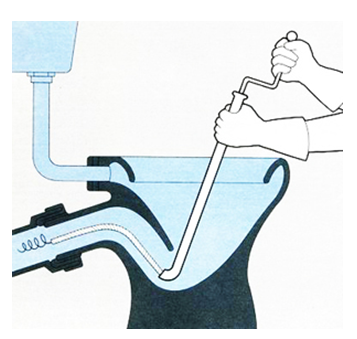
The tip of the plumbing cable is inserted into the drain of the sanitary equipment closest to the collector, freed from the grid. Then, rotating, the cable advances to the obstacle and destroys or pushes it. To facilitate the impact on the obstacle, the plumbing cable can be inserted not into the drain grid, but directly into the sewage pipe. To do this, the siphon is removed under the sink or under the tub, or the inspection hatch is dismantled.
In addition, partial dismantling of the sewage system will help you physically approach the location of the sewer. If the length of the sewer pipes in your apartment is not too high, you can easily find the location of the plug, dismantle the sewerage pipe and simply manually remove the obstacle.
Attention! In the event that in your apartment are still old, cast-iron sewer pipes, or if the pipes are walled or blocked, their dismantling can cause significant financial costs. Perhaps in this case it will be cheaper to pay off the debt to the management company.
Sewer stubs are one way to quickly block a sewage system by isolating one or more sections. Blanks are used quite often, because they can not find alternatives.
And there are several variants of plugs for sewer pipes. Each version has its own peculiarities, it is used in certain situations.
We will discuss with you a question concerning stubs on sewer pipes, we will learn how to distinguish them and interact with them.
Contents of the article
Features and purpose
As you know, the sewerage is engaged in diversion of sewage, human waste and industrial enterprises.
Without it can not do, because all waste must be somewhere to do. In our time, a person averages on average about 200 liters of fluid. It is a liquid spent on personal hygiene needs, household needs, cooking, etc. It needs to be drained off somewhere, than the sewage system and is engaged.
Lay the sewer mainly under the ground. Unlike water supply pipes, there is no need to access it. Unless the cavity of the pipe will be severely clogged. But even in this case, mainly by improvised means.
However, there is a second point. Sewer, paved once (and not necessarily underground) is not so easy to expand. That's why builders try to anticipate possible consequences beforehand, in advance assembling the wiring in the places of potential formation of new branches.
In the future, the pipe will no longer have to be opened, removed and replaced with another sample. It is enough to connect a new branch to the finished output.
So the stubs are just used to block the sewage outlets. They are easy to mount and just as easily removed.
This method is used for a long time. For the installation of a plug on the pipe, it is not necessary that it is underground. Similarly, they operate at the time of construction of sewer risers.

An additional riser outlet will not hurt anyone, since the plug on it completely blocks the empty tap. But there are a lot of benefits from it. Just imagine how much time and effort it takes to crash into a ready riser. Presented? That's just it.
Another direction where stubs are often needed are situational blocking of sewer pipes.
There can be many reasons for this. Starting from regular repair work, and ending with cutting off the sewers of debtors. In any case, it is the stub that performs basic functions to stop the system. Without it, a person would have to expend tens of times more energy and energy on this simple process.
Types and Distinctions
In fact, the pipe plugs are manufactured in only a few variants. Therefore, it is easy to deal with them. We will help you in this.
To begin with, you need to clearly distinguish the stubs:
- constant;
- temporary.
Constant plugs for pipes are called so because they mount them mainly for a sufficiently long period of time. That is, such a stub is installed for several months, years, or even more.
Speech, of course, is about the situations when the sewerage is only rebuilt, and form bends for potential future branches of buildings that have not yet been built or are being completed.
Temporary plug for pipes is a special device that operates by its own principle. Its task is to install a stub in the already existing, and even more so, permanently functioning element of the sewage system. We will also talk about them in more detail.
Permanent stubs
So, what is this constant plug for pipes? What does it consist of? You will be surprised to learn that it consists of a single detail - a body cast from a polymer or metal. Roughly speaking, a pipe stopper is nothing more than a closing lid of a convex sample.
Its body is poured from the material that corresponds to the material of the sewage system. It is very important that the plug material does not in any way differ from the material of the pipe itself.
If we are talking about plastic samples, then there are plugs for pipes:
- polyvinylchloride;
- plastic of mixed compositions.
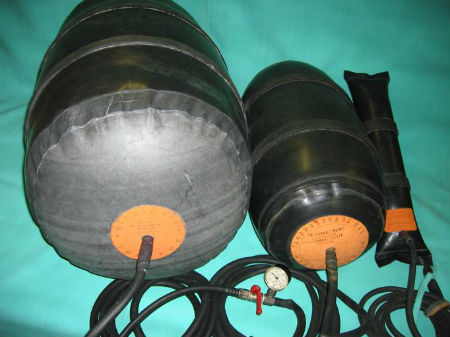
Polyvinylchloride samples are made in gray color from a brilliant light plastic. Strong, cheap, do not react to any external influences, but nevertheless, are not too reliable, and therefore only used as locking elements for domestic sewerage laid directly inside the house.
The second group is intended for pipes laid outside the house. Naturally, we are talking about the sewage underground. Polymer samples of this type are colored in a bright or pale orange color. It is much more reliable and stronger than polyvinylchloride analogs, withstand serious pressure.
Inside the body of the permanent plug, there are seals. A kind of analogues of flare seals glued to the edges of sewer pipes. Sealing can further seal the plug and reduce pressure on it.
Mounting Features
It is very easy to put permanent plugs on ready-made sewer pipes. It is advisable to do this even at the stage of early construction, that is, when the riser is only formed.
Assembly is carried out at any time. The process takes a little time. By and large, the plug should simply be installed on the pipe, clamped to the desired position, and then sealed joints, if this is of course necessary.
Checking the quality of installation is even easier. If the part does not lend itself, and firmly holds in its place, then everything is in order. Sewage system - non-pressure system. There are no serious pressures on its part, and therefore, it is also unnecessary to suffer with the editing "tightly".
Temporary plugs
Temporary blocking sewage systems - the same necessary step, as well as their complete blockage at the time of construction. The reasons for how we have already noted above, there are many.
It is difficult even to list them all. The simplest include the need to modify or repair pipes at a specific level.
For example, in an apartment. AT apartment buildings The risers pass through all the floors. They drain the sewer from each apartment.
And here's what to do if you live, for example, on the third floor, and you need to urgently repair something or connect another branch of sewage. You can, of course, do without stifling. But is this a good option - a rhetorical question.

If you agree to tolerate a terrible smell and resigned yourself to the potential for draining the drains from neighbors from the top directly to your apartment, then maybe everything is not so bad, and if not, then there is simply no alternative to installing situational stubs. Fortunately, it makes it relatively easy, even without the help of a specialist can not do.
Design and operation principle
The temporary plug is a special device that is artificially placed in a functioning sewage outlet.
The stub can be:
- high-grade;
- wire.
A full cap completely blocks the branch, preventing any waste from entering at all. You can not drain the water in the sink of your apartment.
Rather, you can merge it, you can, but only it will not go anywhere, because the exit to the riser is blocked. But also the drainage of the neighbors will not become a hindrance to you, and therefore you can start to modify the sewer without fear.
Mesh caps are more a way of fighting debtors than a full-fledged work item. They pass water and the smallest waste, but do not let fecal masses, large rubbish, various kinds of sediments, etc. go away.
By the principle of action, the stubs are divided into:
- Inflatable.
- Mechanical.
At this point, we will dwell in more detail, since each option involves the use of its equipment.
Setting a temporary blank (video)
Inflatable plugs
Do you know that inflatable rubber balls, having sufficient resistance to pressure from the outside, are able to lift even stone blocks? At least, rescue teams of rescuers are always equipped with inflatable rubber valves for lifting heavy objects.
If the properly designed rubber air valve is capable of this, then it is exactly with the sewer riser that it will cope.
The principle of using inflatable bollards is extremely simple. There is a device with a long hose, as well as an inflatable cap. It is a usual rubber ball with teeth, connected to the hose.
On the hose is a camera, as well as several auxiliary pens. The hose is lowered into the sewer pipe. Typically, to access it using the top access point on the roof.
The camera provides the operator with visual contact. As soon as the stub reaches the destination, it is placed in a bend, and then inflated. In the blown form the ball has a diameter of 2-4 cm. It can be inflated to a diameter of 20-30 cm, or even more.
Mechanical plug
In the case of working with mechanical samples, a similar but slightly different technology is used. Here, too, you need an operator, a camera, a special machine for installing a stub, etc.
However, the character of the blocking device changes. Mechanical plug - is a folded structure with shields.
When folded, it fits easily inside the riser. When the operator reaches the desired point, he simply gives an electrical signal - the plug is unfolded, the shields are fixed on the walls, automatically blocking the sewage tap.
so, my friends, I had an unpleasant incident, I stuck this nakleechku:
nakleechka
:
arrears arose at a difficult time for the family, then I was a student, my mother had health problems and work, and our laws let us in a vicious circle, the only way out of which was to lay out money that simply did not exist ...
but this topic is not money!
while we live like that, paying for current bills (which apparently did not suit someone)
garbage I thought: I can not cut off the sewage only one of them - either they will block the entire riser, or they will come to me, and I certainly will not let them!
Hmm, the technology took a step further than I imagined ...
vobschem began to notice when draining the toilet, that the water is bad somehow leaves ...
well, I think he's leaving, and all right. But after a few days (I'm not a homebody, and now I live alone, so it took me several days)
i began to strain it, and then even when you wash your hands in the sink, the level in the bathroom will rise ...
i think I need to call the plumber - Th something hammered!
called, said in the morning, wait!
... I waited a long time until the first half of the day was over! then I decided to ask how things are there, maybe they did not enter the entrance or what else ...
and here to me news! you put a stub for non-payment!
so how?
came the master, with the organization that does this, and put it! it's not us, and shoot it too, they will, after payment ...
This is the number!
lyrical digression - I live on the last floor!
I'm calling a friend who once had something to do with this, I'm telling you how ... he told me how they did it ...
sounded crazy (then they did it in a simple way, not like now!) I go down to the neighbors, I ring at the door.
Out: - who is there?
- Your neighbor is on top.
- what do you need?
- something you have to look at so as not to flood you.
- "no type, no fig"
- Why are you afraid of me?
- yes (there is a lady, 30 years old), my mother will come, come in!
(Bl for the nonsense, I think to myself!)
- Well, we have seen you - you have a dog - poodle gray
- Yes, but I will not open it without my mother!
(I think, well, all 3.14th place! horseradish knows, now I do not know whether they put me this stub and how it was put)
- and to you the sanitary technicians one of these days did not come?
- no.
Further dialogue was useless, but I got the answer!
thought was to throw weight there! but there was no certainty ...
while driving on an elevator (one whole floor) I thought - I'll shoot on the Internet!
so, after watching a couple of forums and heels video, I realized that these things are different!
i did not want to disassemble the toilet, for 2m reasons:
1 long and hard
2 I have a couple of times went "great"
vobshchem I decided to disassemble the riser, because I'm on the last floor, and on top of trouble will not come)))
i have it plastic, even with a viewing window!
but! I could not unscrew this window.
okay, try on!
the riser could not be removed - it was inserted into the tension, and this is not calculated!
okay, let's break!
i had a small metal hacksaw, a hammer, a chisel, and a universal key!
vobshchem broke the wall of the toilet, sawed and broke off a part of the riser, disconnected it, took it out and found such a weight:
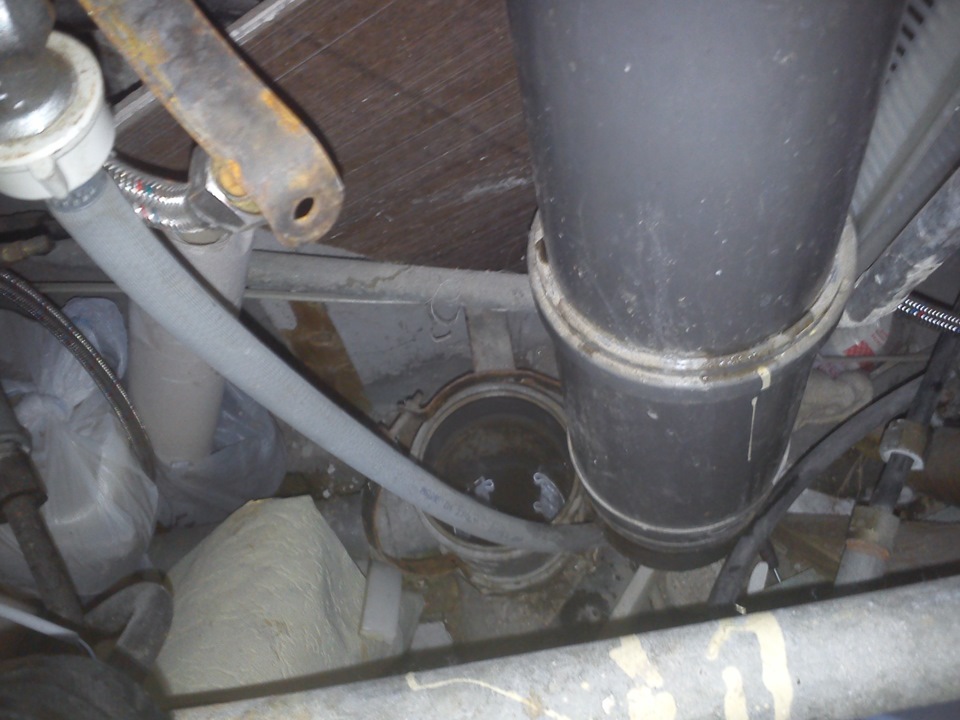
you did not follow, you put this miracle, and you can not / do not want to pay money, then:
- you can just pick it up with a tongue, but here you need some special equipment to find and catch on
- my option, only with spetcification on your floor
- go to the master in the zhk, and ask him, I think agree!
- Try to knock it out from the toilet ...
all good luck, do not get into trouble!))
P.S. and they did it right before the weekend!
customer care on the face!
Okay, swallowed, beloved country, with such citizens still counted ...

